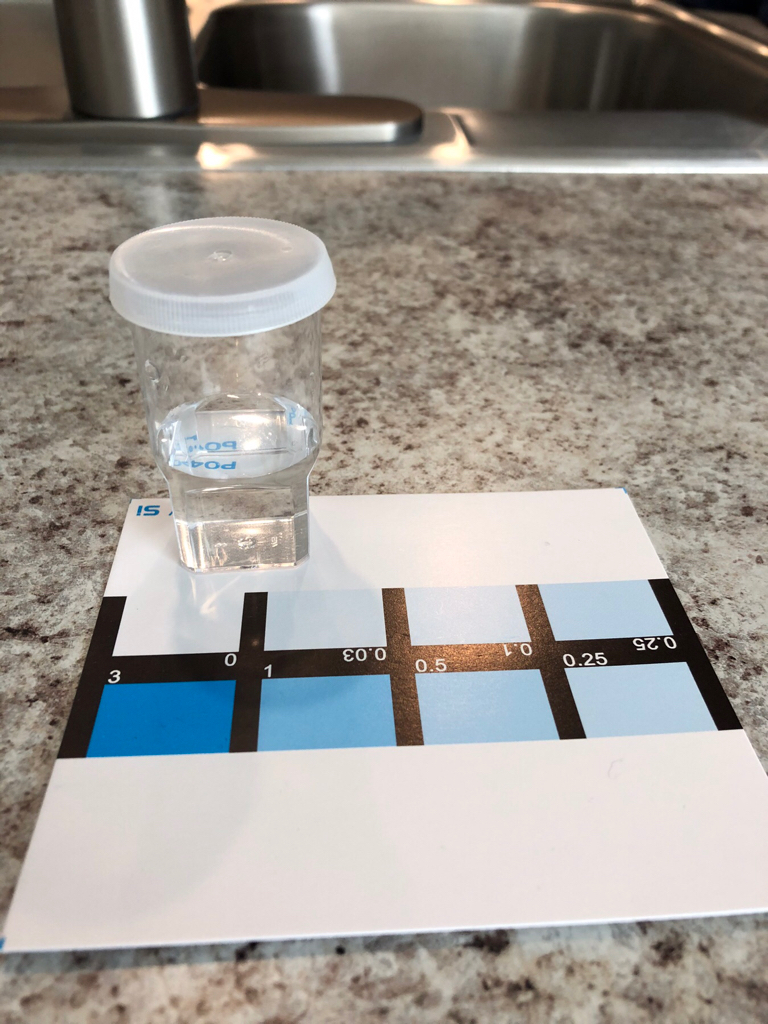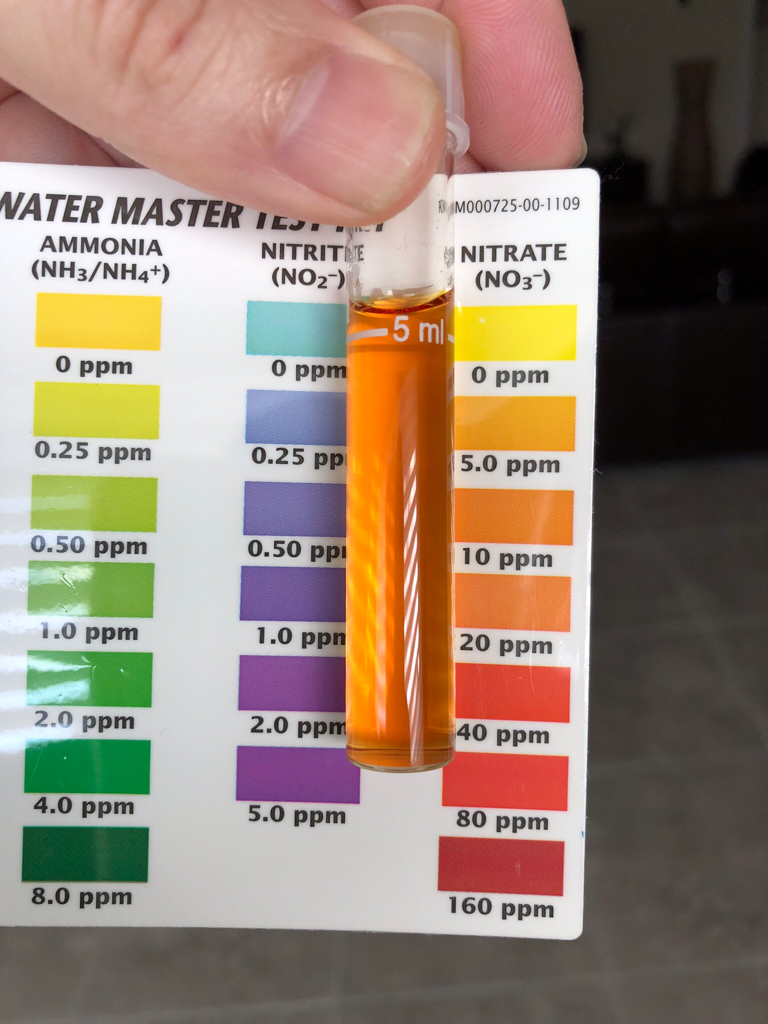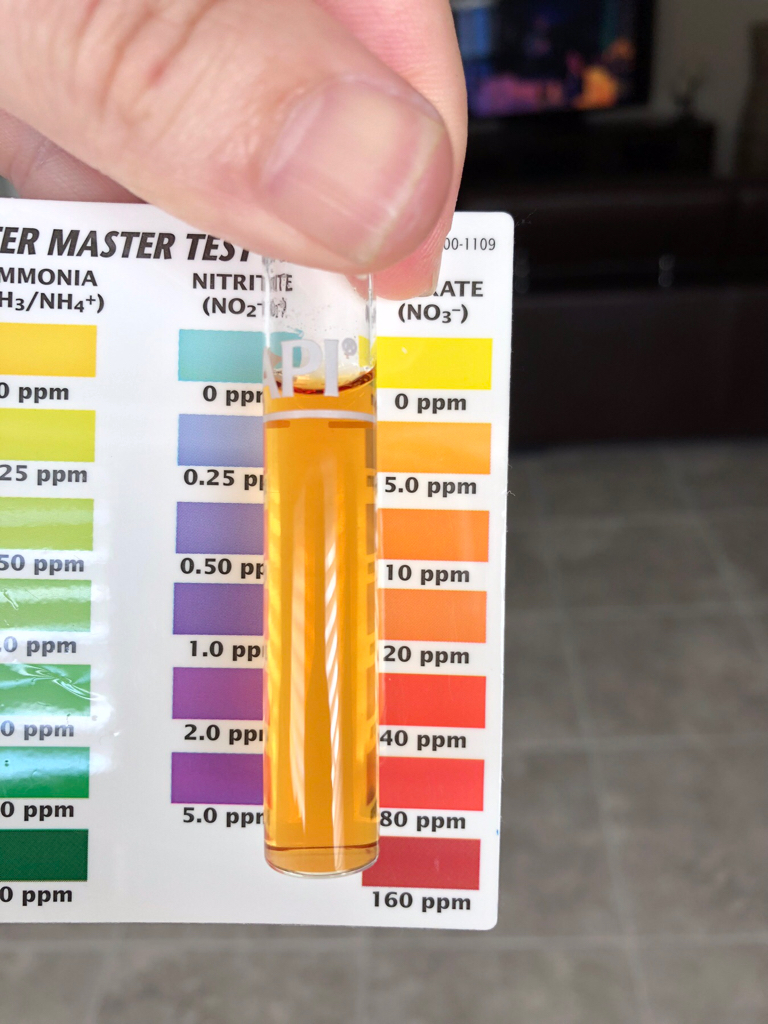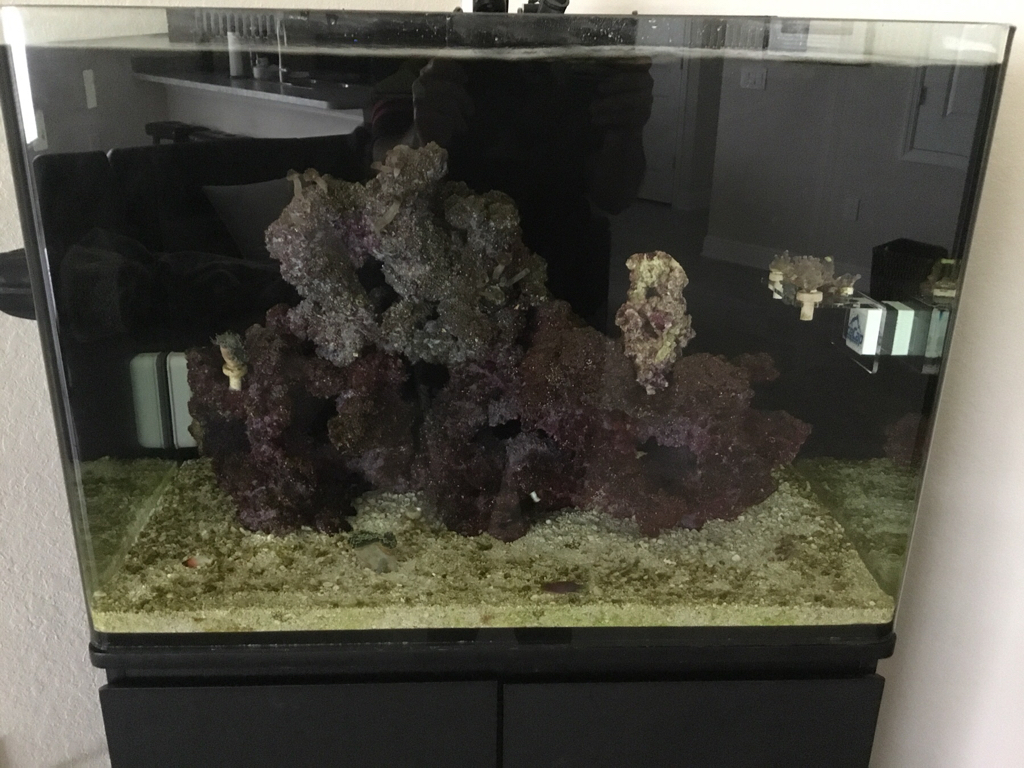I am not currently running any phosphate remover. I was using rowa phos in my tank for about 1 month. Then I took it out when I kept getting zero phosphates.
I feel your pain. I've been battling GHA for almost a couple of years, although, it have been gradually going away over the last couple of months. It's almost gone now. Also, during this whole time I always had zero phosphates and nitrates per the tests. What I've realized is that the GHA was absorbing all the nitrates and phosphates, therefore, giving a zero reading.
Here's my 2 cents worth ... the main things I think have helped my tank were:
- Continually removing the GHA. Mainly by using a silicone siphon tube that allows me to pinch the GHA while it's in the tube and pull it off. I also use a syringe with a long, small diameter tube on it. I've been able to suck the algae off from rocks that way.
- Small army of Hermit Crabs. They helped keep clean up and ate some algae.
- A Tuxedo Urchin. It would not eat the thicker areas of GHA, but would thoroughly clean the other areas, which kept the algae from coming back. Over time most of the rockwork was cleaned.
- Brightwell's Phosphate-E phosphate remover - I ran across this during one of BRS's live videos, where they recommended using it instead of GFO. So I figured I'd give it a try. So I started carefully dosing it with my dosing pump throughout the day. What I found was it very effective at removing phosphates and over time it removed all the phosphates that were stored in the GHA and the rocks. I like it because I could precisely control the phosphate level, vs. using GFO, which would give an up and down roller coaster ride.
- The tank is reaching it's 2 year mark, and is relatively mature.
I hope this helps a little.





















